
Privacy statement: Your privacy is very important to Us. Our company promises not to disclose your personal information to any external company with out your explicit permission.
A Cable Harness, also known as a Wire Harness, Cable Assembly, wiring assembly or wiring loom, is an assembly of cables or wires which transmit signals or electrical power. The cables are bound together by straps,cable ties, cable lacing, sleeves,electrical tape, corrugated tube, a weave of extruded string, or a combination thereof.
www.etopwireharness.com
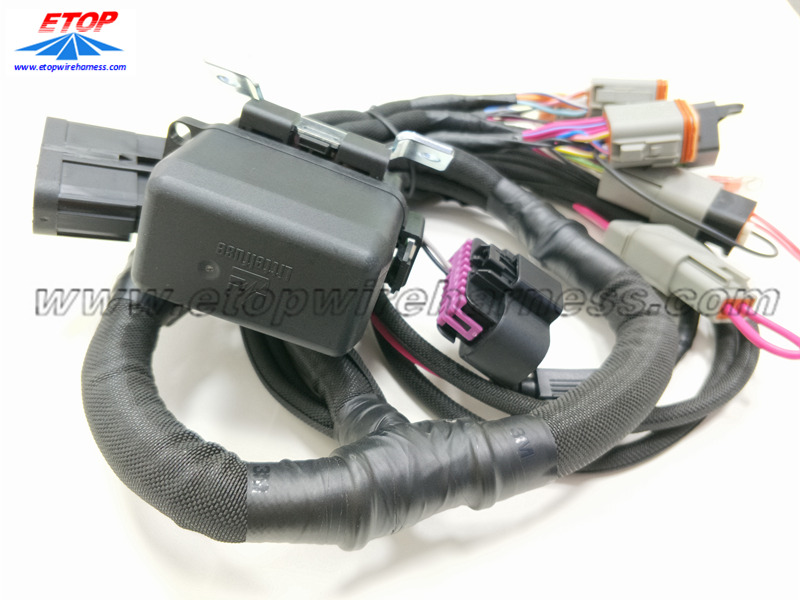
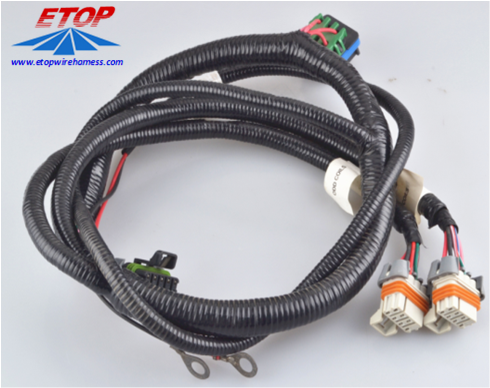
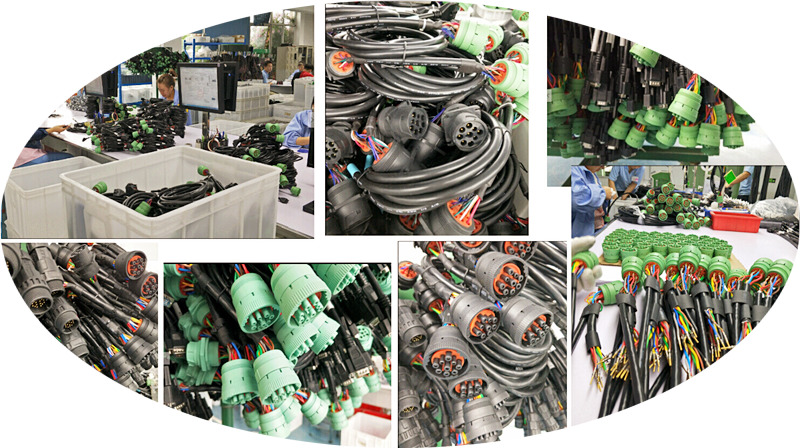
Commonly used in automobiles, as well as construction machinery, cable harnesses provide several advantages over loose wires and cables. For example, many aircraft, automobiles and spacecraft contain many masses of wires which would stretch over several kilometers if fully extended. By binding the many wires and cables into a cable harness, the wires and cables can be better secured against the adverse effects of vibrations, abrasions, and moisture. By constricting the wires into a non-flexing bundle, usage of space is optimized, and the risk of a short is decreased. Since the installer has only one harness to install (as opposed to multiple wires), installation time is decreased and the process can be easily standardized. Binding the wires into a flame-retardant sleeve also lowers the risk of electrical fires.
Production
Cable harnesses are usually designed according to geometric and electrical requirements. A diagram is then provided (either on paper or on a monitor) for the assembly preparation and assembly.
Wire size in AWG and mm:
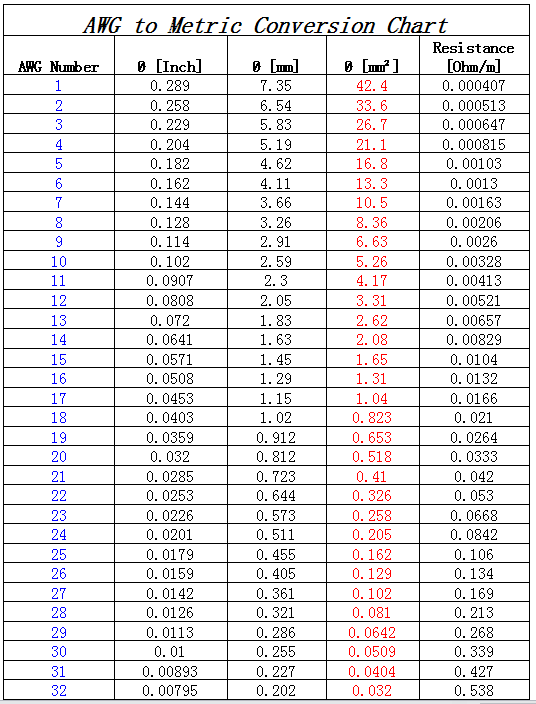
Crimped terminal can be analized by section-analysis machine as below photo.
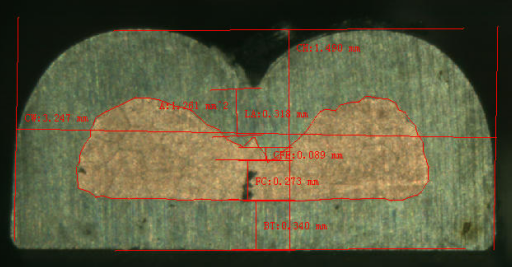
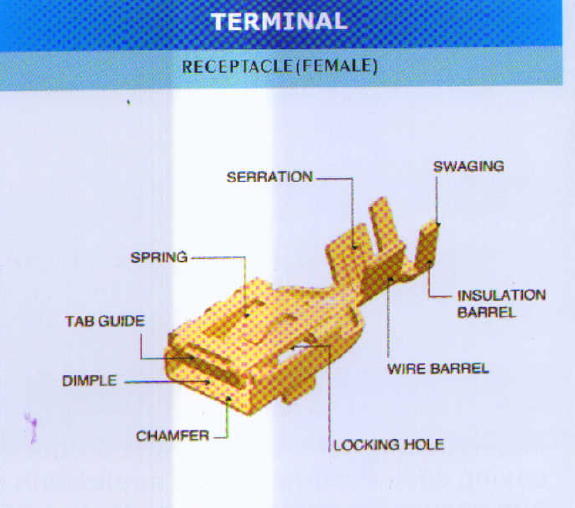
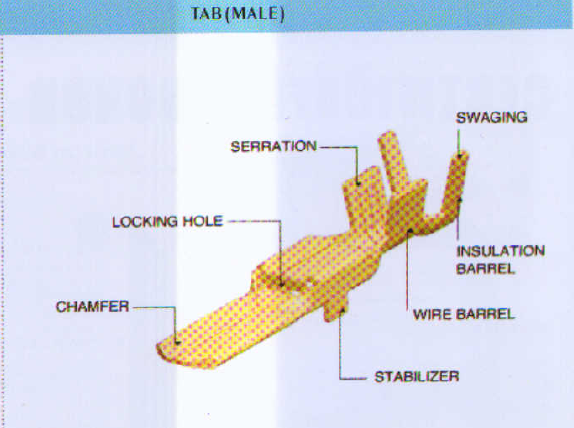
The wires are first cut to the desired length, usually using a special wire-cutting machine. The wires may also be printed on by a special machine during the cutting process or on a separate machine. After this, the ends of the wires are stripped to expose the metal (or core) of the wires, which are fitted with any required terminals or connector housings. The cables are assembled and clamped together on a special workbench, or onto a pin board (assembly board), according to the design specification, to form the cable harness. After fitting any protective sleeves, conduit, or extruded yarn, the harness is either fitted directly in the vehicle or shipped.
In spite of increasing automation, in general, cable harnesses continue to be manufactured by hand, due to the many different processes involved, such as:
· routing wires through sleeves,
· taping with fabric tape, in particular on branch outs from wire strands,
· Crimping terminals onto wires, particularly for so-called multiple crimps (more than one wire into one terminal),
· inserting one sleeve into another,
· fastening strands with tape, clamps or cable ties.
Pre-production can be automated in part. This affects:
· Cutting individual wires (cutting machine),
· crimping terminals onto one or both sides of the wire,
· partial plugging of wires prefitted with terminals into connector housings,
· Soldering of wire ends (solder machine)
· Twisting wires.
Testing the electrical functionality of a cable harness can be done with the aid of a test board, The circuit diagram data are pre-programmed into the test board, where harnesses can be tested individually or in multiple numbers.
August 19, 2024
October 15, 2024
July 03, 2023
July 03, 2023
July 03, 2023
November 19, 2021
November 14, 2020
Wyślij je do tym dostawcy
August 19, 2024
October 15, 2024
July 03, 2023
July 03, 2023
July 03, 2023
November 19, 2021
November 14, 2020

Privacy statement: Your privacy is very important to Us. Our company promises not to disclose your personal information to any external company with out your explicit permission.

Fill in more information so that we can get in touch with you faster
Privacy statement: Your privacy is very important to Us. Our company promises not to disclose your personal information to any external company with out your explicit permission.